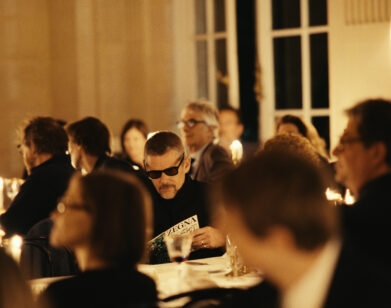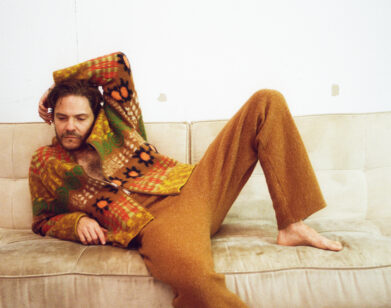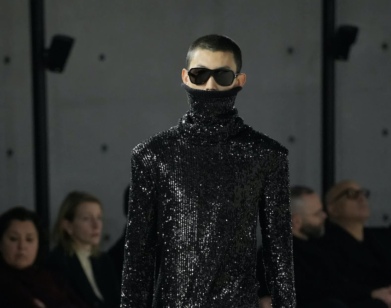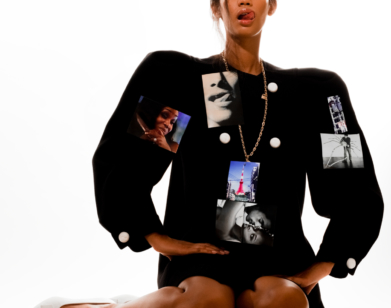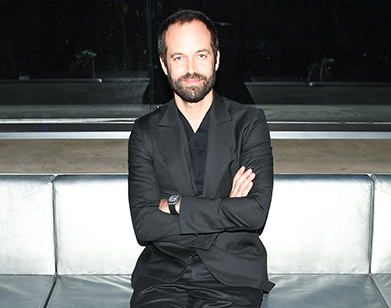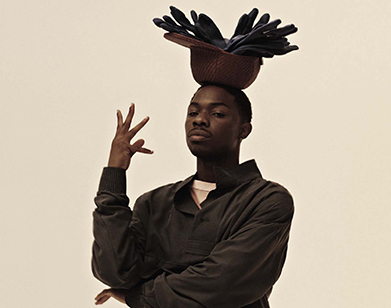COLLAB
Alessandro Sartori And Greg Chait Fuse California Cool with Milanese Polish

Greg Chait (left) and Alessandro Sartori (right).
On Wednesday night, a crowd of cashmere-drenched VIPs ascended on a luxurious Richard Neutra-designed home in the Hollywood Hills to celebrate the launch of the splashy new Zegna x The Elder Statesman collection and Maxwell Pop-up. Spearheaded by Zegna creative director Alessandro Sartori and The Elder Statesman founder Greg Chait, the collaboration combines the quality-backed ethos of a 113-year-old Milanese company with the playful creativity of a young, SoCal-based brand. Together, the two designers married their love of craftsmanship, quality, and sensuous fabrics to create a lasting, colorful collection of gender neutral garments fit for today. To find out more, we sat down with Sartori and Chait for a conversation that covered everything from sustainability to celebrity-backing and personal style.
———
ALESSANDRO SARTORI: Do you want coffee?
TAYLORE SCARABELLI: Water’s fine, thank you. I’m already over-caffeinated.
GREG CHAIT: You too?
SCARABELLI: Yeah [Laughs]. It was an early morning. So let’s start from the beginning—
SARTORI: Name and birthdate? [Laughs]
SCARABELLI: How did you two decide to collaborate?
CHAIT: We were introduced through a mutual friend. I’m supply chain-obsessed and I thought I knew quite a bit about Zegna at the time so I jumped at the opportunity to meet.
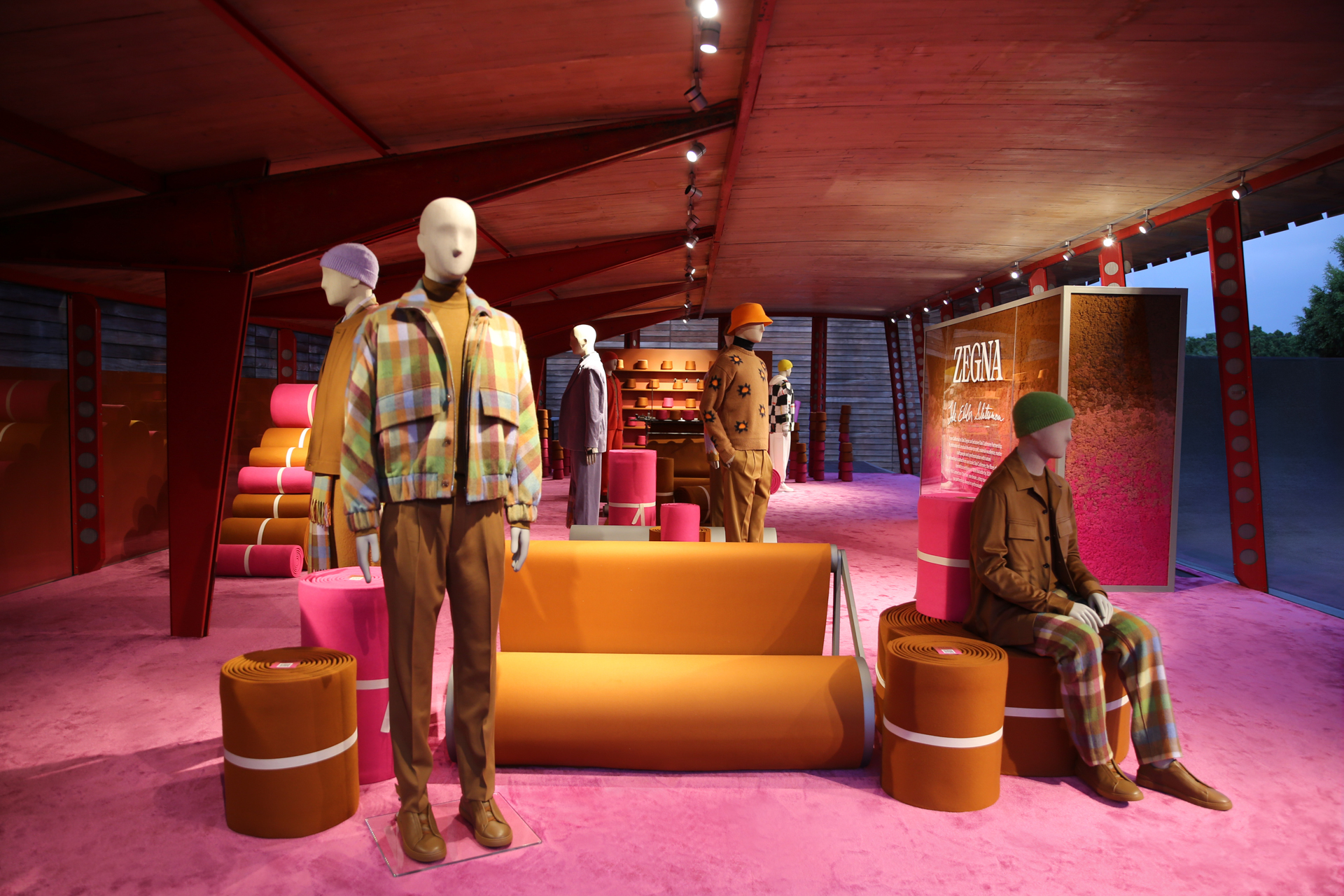
Maxwell Pop-up imagery courtesy of ZEGNA and The Elder Statesman
SARTORI: And I felt a good energy. He was asking questions about our supply chain, our artisans, and our Oasi cashmere. We were already having a very interesting conversation, even without knowing we were doing something together. So we started from sharing good values.
SCARABELLI: I was wondering if you could speak a little more to that because right now, there’s a lot of obfuscation in the fashion production process. People don’t know what’s going on in factories. How are you guys doing it differently?
SARTORI: First of all, we are using a totally traceable cashmere, we trace the product from Mongolia down to Italy. We don’t blend that cashmere with anything else and we treat everything internally. So we know, for example, that this cashmere arrived on September 1st, ’22 from a specific region in inner Mongolia.
SCARABELLI: It’s like a fine wine.
CHAIT: I was going to say, it’s like a harvest. We’ve been talking about food a lot. We all want to know what we’re putting in our bodies, but it wasn’t that way 20 years ago.
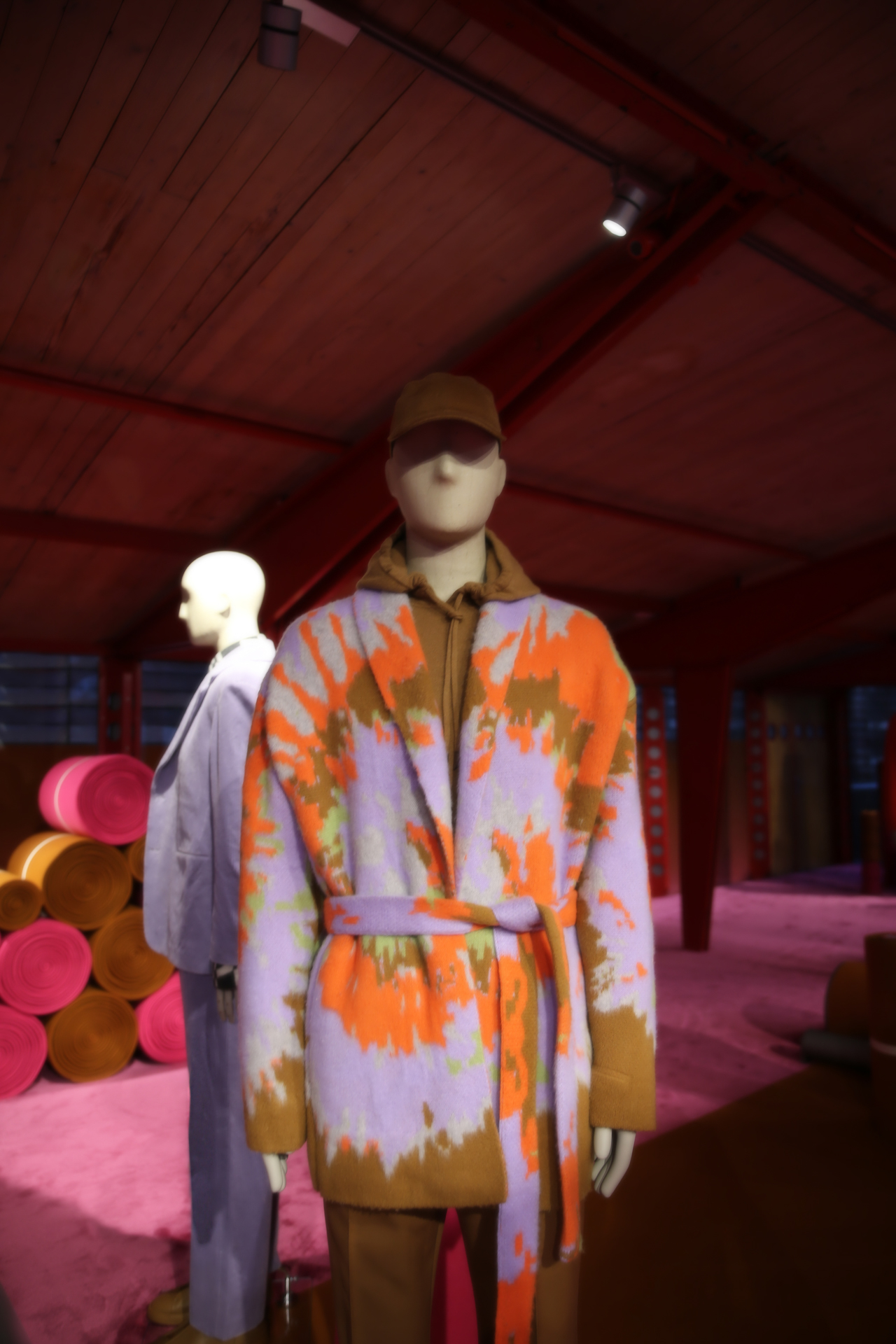
Maxwell Pop-up imagery courtesy of ZEGNA and The Elder Statesman
SCARABELLI: I do feel like fashion is kind of the last frontier when it comes to people caring about production. Even when you’re talking about high-end luxury goods that you’re thinking of as investment pieces, that messaging can still be hard to get across. Have you seen the industry shift over the time that you’ve been at Zegna?
SARTORI: Yeah, mostly after COVID. Brands play a big role because if you don’t teach your customer, they aren’t educated. The artisans are the key part of the game and we need to value them well. That means buying less and paying more. Because these pieces are more qualitative if they are made with those kinds of rules. They’re here to stay longer. It’s a completely different vision, but you need to explain why that garment is costing more. It’s a journey.
CHAIT: Yeah, and I don’t think we’ve had that moment yet in fashion like we’ve had in the food industry, where big shows on the Food Network and series like The Bear have facilitated a new respect for quality. But imagine there’s a huge moment in media for fashion. That’s what we need.
SCARABELLI: I’ve been following Zegna and you can always feel and see the quality right away, while there are a lot of luxury products out there right now that are not being made well. Things seem to be going downhill in a very serious way.
SARTORI: We know. Even big brands.

Maxwell Pop-up imagery courtesy of ZEGNA and The Elder Statesman
SCARABELLI: Your collection is also very trendy. It’s very eye-catching. I’m curious about the ethos behind it.
CHAIT: Well, that’s where the teams all come in, like our creative director Bailey [Hunter]. The teams work together to come up with the highest quality production that, at the same time, is aesthetically fun.
SCARABELLI: It’s very flamboyant, which brings me to the fact that people are talking a lot about shifting ideas of masculinity. It almost feels like a weird word to use in 2023. Do you have any thoughts on how style is shifting in the menswear arena right now?
SARTORI: We noticed that there are more and more people who are willing to play with their style. Whereas before, the old menswear uniform was a sort of a cliche. We got a very interesting, authentic reaction from buyers due to the fact that this collection doesn’t resemble anything else.
SCARABELLI: There’s a push and pull between SoCal and Milan.
SARTORI: Yeah, that was behind the creativity. We are what we are, but we are unique. And we also like to blend these pieces with personal stuff, blending a bright shirt with a nice pant or a chino or a denim and not necessarily building the full silhouette.
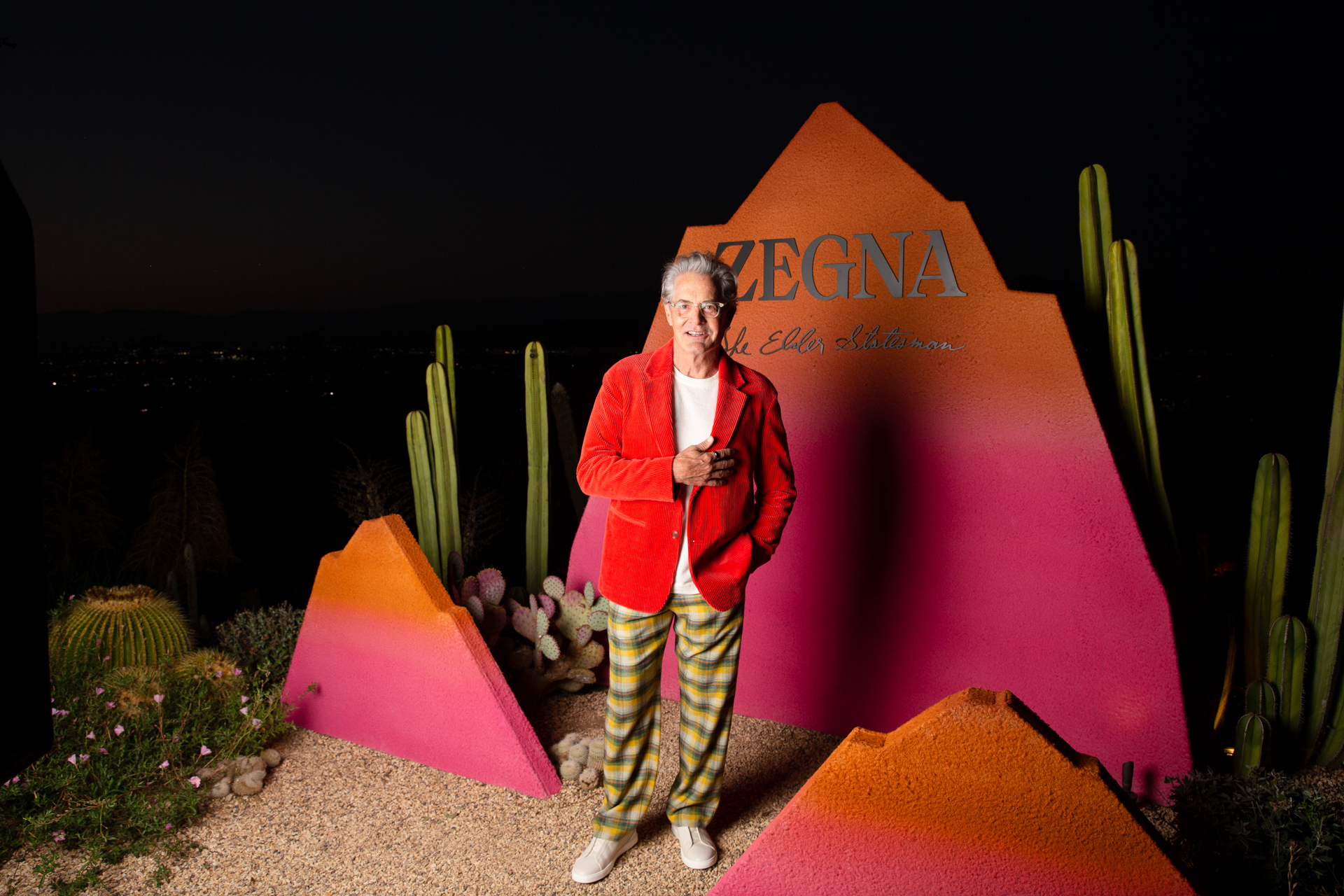
Kyle Maclachlan.
SCARABELLI: I also read somewhere that you used to work in talent comms, Greg. Has that affected how you’ve been thinking about the importance of celebrity and entertainment in branding?
CHAIT: That’s a good question. No matter what, I want whoever gets their hands on our clothes to appreciate them because of how much work’s gone into it. And I’ve kind of always been like that. No matter how big of a name it is, it doesn’t mean anything if the person doesn’t care. So that’s at the core of my approach because I was on the entertainment side of things and I saw how many gifts people got. When you just get boxes and boxes from people you don’t know, you don’t care. Of course, if someone of notoriety that is aligned with your company wears your stuff, that’s great for business and it’s great for the team. Everyone gets excited.
SCARABELLI: But you want to be selective.
CHAIT: You want to be on brand. It immediately loses value if it’s easy to get it. But I’m also really democratic. I’m not judgy at all. I just want to make sure that people care.
SARTORI: Agreed.
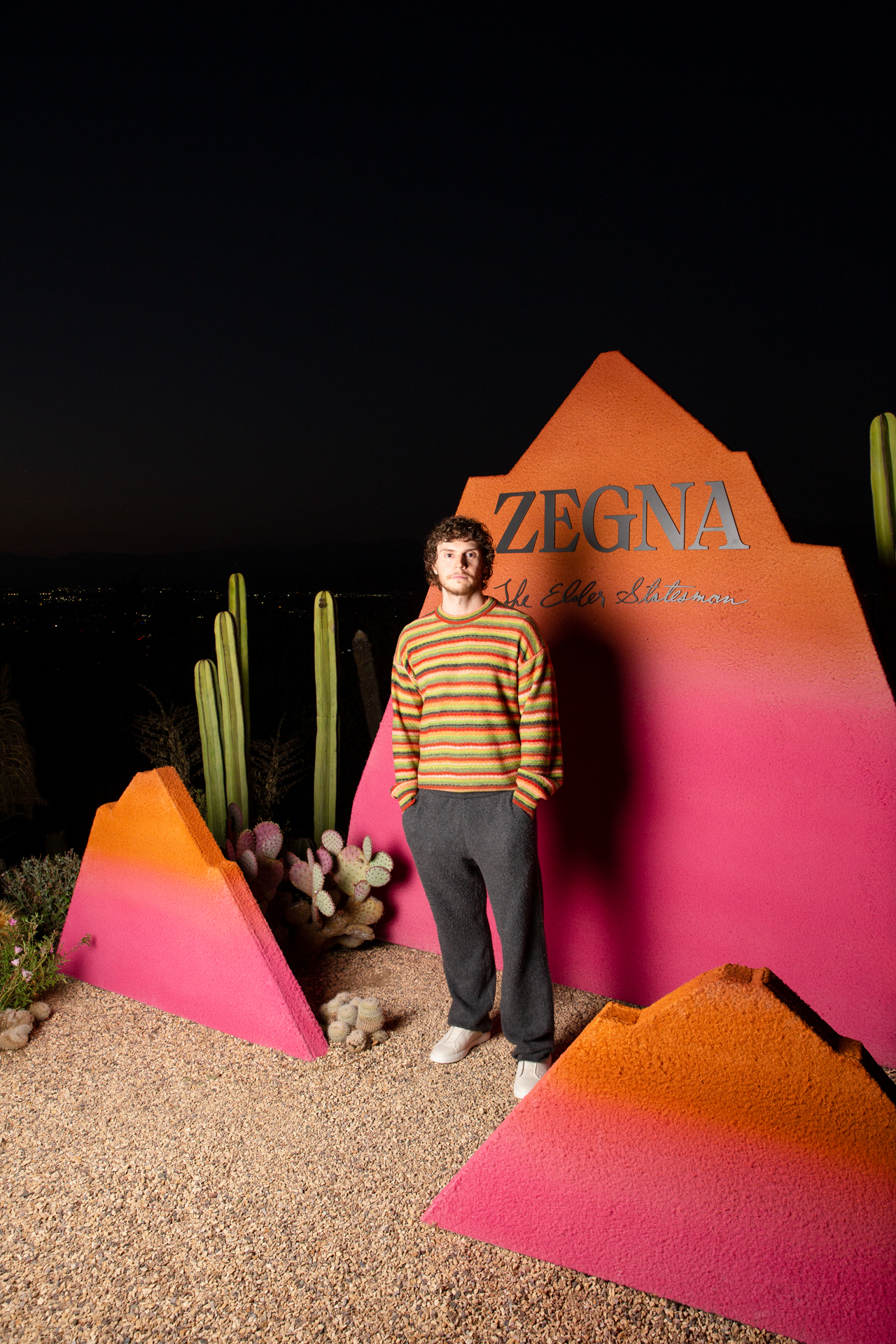
Evan Peters.
SCARABELLI: What were the big takeaways from working together on this collection?
SARTORI: There are always different ways to work and if you are open to understanding other’s methods, you can find success. For example, we have a super product team with an amazing archive and technicians who are the real strength of Zegna. But working with The Elder Statesman was equally if not more interesting because we are fascinated with their vision of hand-making like you are in a small laboratory. As well as the L.A. vision that Bailey has as the creative director.
CHAIT: Yeah, it’s fun. Our little gang from LA, we’re passionate, but it was amazing to level up and learn—
SCARABELLI: The Italian ethic.
CHAIT: Yeah.
SCARABELLI: Well, it’s a really interesting partnership because you’re offering the insight of a young brand that’s been able to get a lot of attention in an era that’s a lot different than when Zegna was operating even 30 years ago. It works on both ends. My last silly question is, have you influenced each other’s personal style at all through this process?
SARTORI: I like seeing Zegna through the eyes of a different person, which is located here.
SCARABELLI: Because maybe you wouldn’t have been wearing a checkered sweater—
SARTORI: Probably, yes. But it’s also interesting to see some of our iconic pieces that I designed maybe four years ago styled in a different way.
CHAIT: I had a very minimal closet. It looks fuller now that I’m more interested in the fabric game. I’m shopping differently. And I just know if you go to Zegna, it’s made well.
SCARABELLI: I think it’s safe to say that you’re both allergic to polyester. [Laughs]
SARTORI: Very much so.
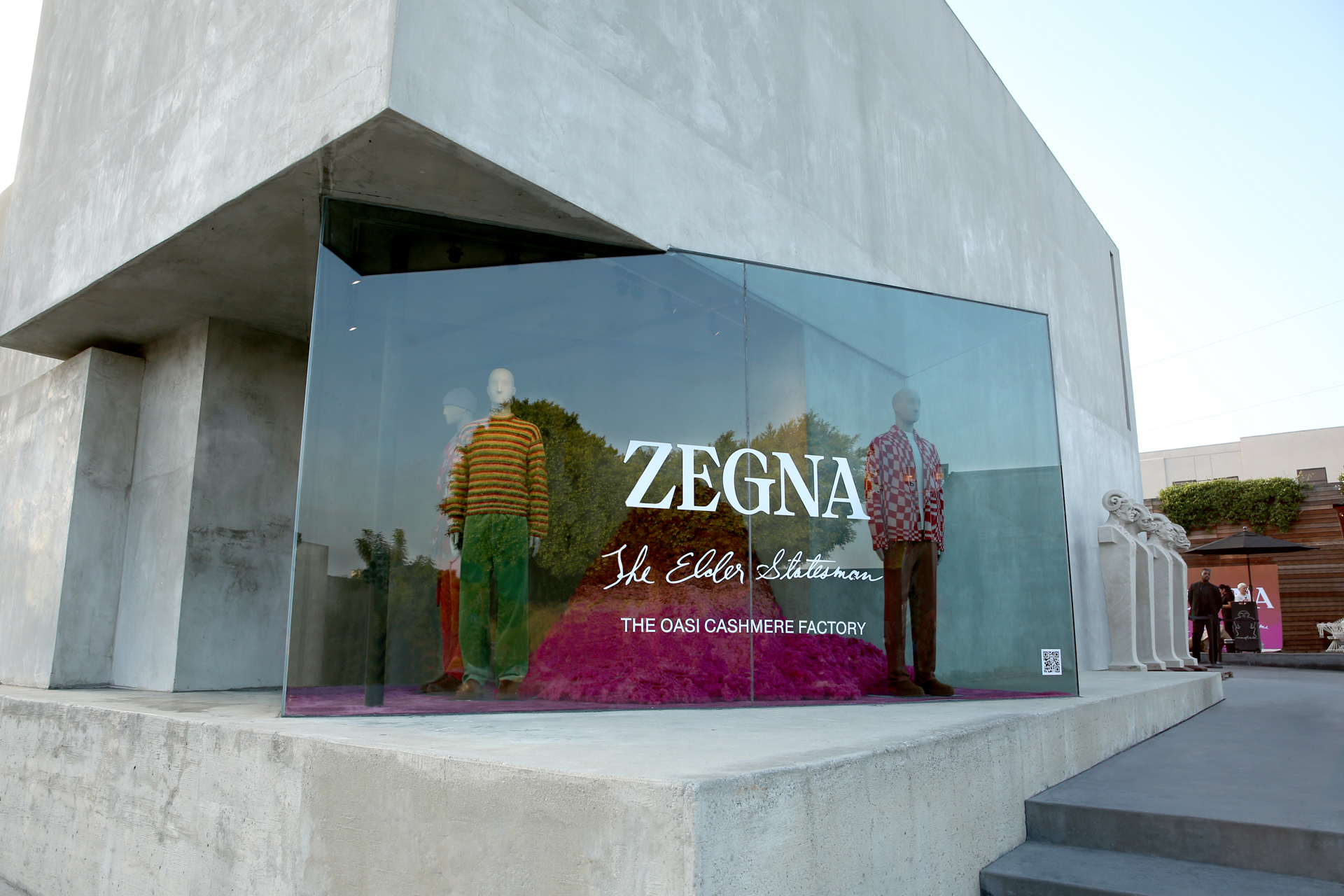
Maxwell Pop-up imagery courtesy of ZEGNA and The Elder Statesman

